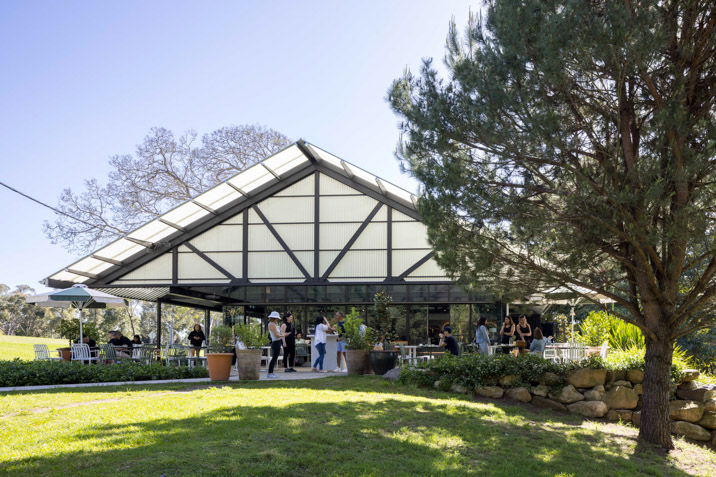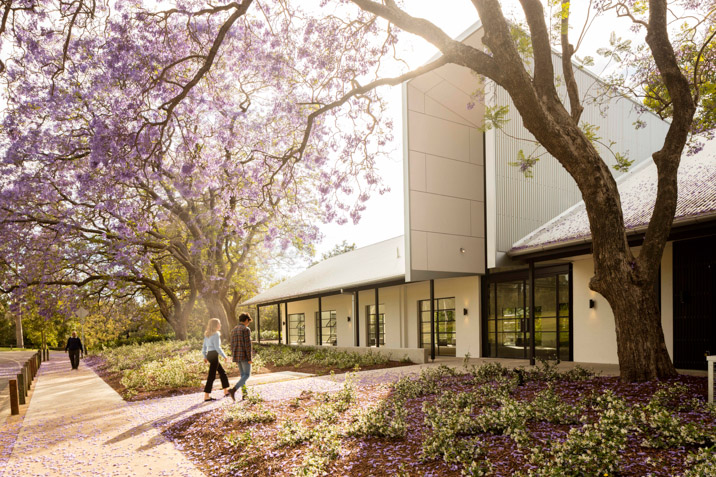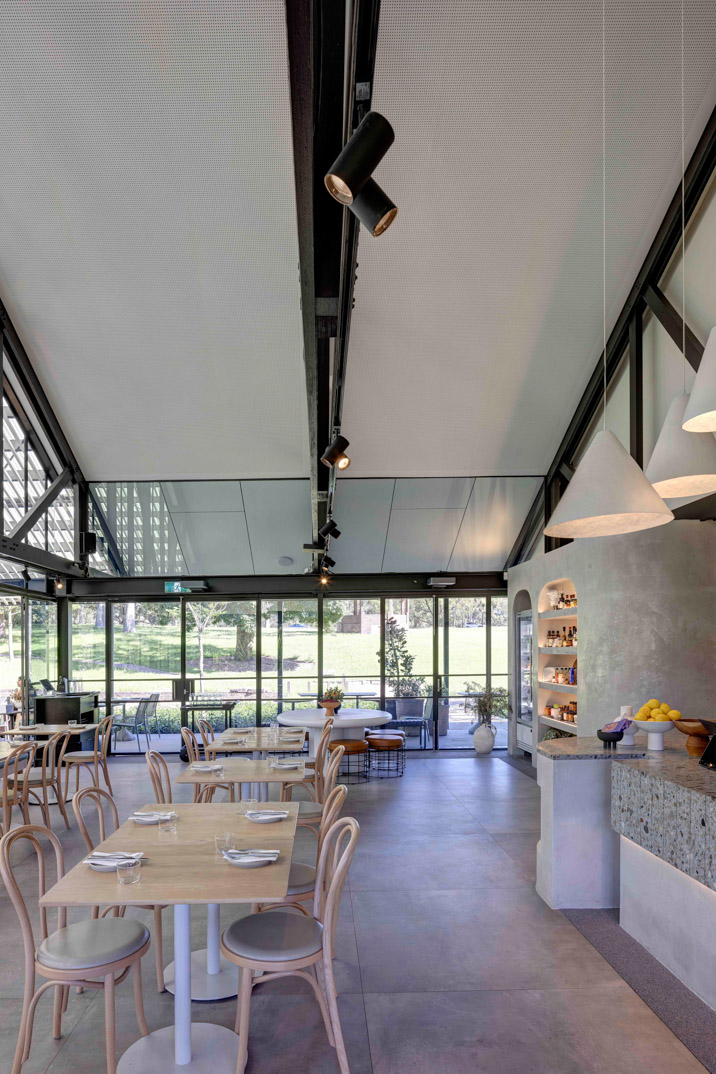When fire rips through our buildings, it is not uncommon to believe very little can be salvaged. The sheer force and heat has a devastating effect on interior and exterior elements, and can rip through a building with ease, leaving a pile of ash in its wake.
Thankfully this story captures the ingenuity of an architect who was able to salvage the remains of a burnt out cafe to transform it into a pavilion in Sydney’s geographical heart.
Sam Crawford Architects’ Parramatta Park Pavilion encapsulates the brilliance of contemporary architecture. The practice was able to reuse and repurpose elements of a cafe within the park that was destroyed by fire in 2016. The pavilion comprises a restaurant and public amenities, with the structure connecting with the nearby Parramatta River and surrounding UNESCO World Heritage-listed landscape setting.

“The key design driver was to maintain the footprint of the former cafe building so as to avoid disturbance of significant Indigenous and early European artefacts,” says Sam Crawford.
“Reuse was also critical - the slab, walls, bricks, many steel windows and doors and some roof trusses were all recycled. It was a gymnastics exercise - we couldn’t dig anything, the utilities had to remain in the same location, and of course we needed to meet the 21st century building code. And be future proof to adapt for changing uses.
“We wanted to respect the layers of history of the site - the park setting has a rich period of occupation by the Burramatta clan of the Darug people and ongoing connection for the Indigenous community. It is one of eleven sites that form the ‘Australian Convict Sites’ World Heritage listing, and contains the oldest remaining public building and oldest remaining workers' cottage in Australia.”

Large steel-framed windows, doors and high ceilings welcome visitors on arrival, providing natural light and views out to the park, river and cityscape. Lightweight, transparent materials characterise the roof, with the ability to look out towards the sky reaffirming connection between interior and exterior. The translucent roof at the south-western end is cantilevered out to create an additional outside covered eating area, increasing dining capacity and giving shade from the afternoon sun. The interior fitout was handled by Nic Graham & Associates.
A marker in the landscape serves as an entry to the pavilion, and provides a visual link through the building to the river, mediating two gable roofs. The oversized threshold welcomes, gathers and directs patrons, while framing the view of a large fig tree and river.

The pavilion sits on the site of the former dressing sheds for river bathers, which were erected in 1912 and unfortunately ruined by the fire that ripped through the cafe in 2016. The pavilion overlooks a swimming and picnicking spot titled Little Coogee, which connects to cycleways and walkways through the park.

